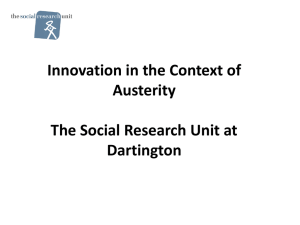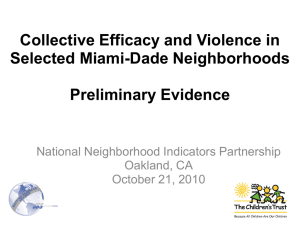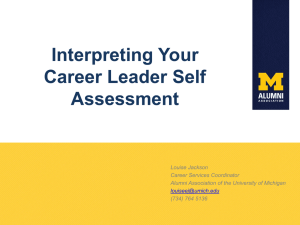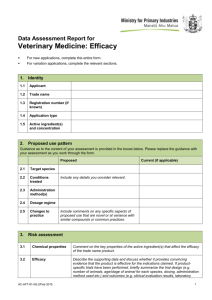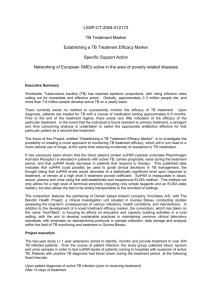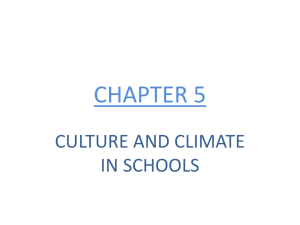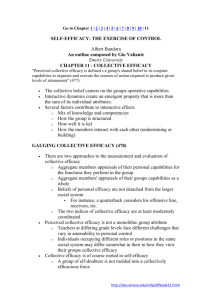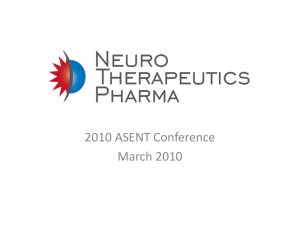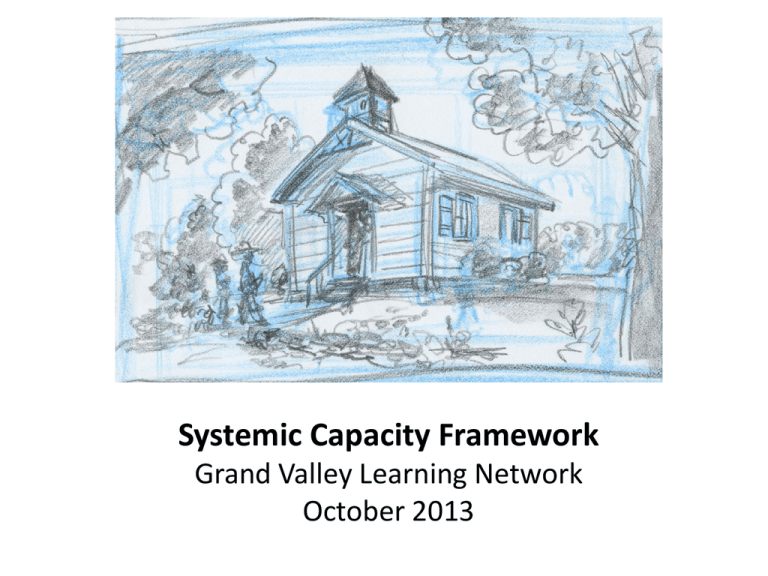
Systemic Capacity Framework
Grand Valley Learning Network
October 2013
Systemic Capacity
Framework
Professional
Development System
Leadership
Do we have the leadership
at the necessary levels to
drive the improvement
efforts?
Human
Principal Leadership
Distributed Leadership
Adaptive Leadership
Guiding Coalition
Do we have the right
people and in the right
positions?
Will
Skill/Competencies
Efficacy
Social
Do we have the collective
ability to change?
Professional Capital
Relational Trust
Stakeholder Engagement
Internal Accountability
Collective Efficacy
Instructional Guidance
System
Inventory Directions
1.
2.
Review items on the inventory, and register your color rating (write
color in box).
Green=fully in place.
Green/Yellow=well developed and in place,
some areas of advancement necessary.
Yellow/Red=steps taken and some
progress made, but sill need multiple areas of
significant advancement.
Red=no progress to date.
Identify any item for which you want further explanation.
3.
As a team, share your assessments and your reasons/evidence for
each item and try to reach consensus on a color rating.
Register your consensus rating and the flipchart-sized template.
4.
Time allowing, discuss who else needs to be part of your analysis
and/or how might you be able to use these exercise in your school.
Copyright © 2013 by Connecticut Center for School Change, Hartford, CT. All rights reserved
Strategic Capacity Inventory--Leadership
In terms of the improvement work your school has before
it, to what degree do have the necessary capacities ?
Formal Authority. The right leaders in the key position
leadership positions necessary to implement the strategies.
Leadership Efficacy. Key positional leaders, especially
principals, have the efficacy to implement the strategies.
Guiding Coalition. There is a guiding coalition (leadership
team) to drive and monitor implementation of these
strategies.
Informal Leadership. In addition to formal leaders, there
are informal leaders with influence over colleagues
engaged in these efforts.
Distributed Leadership. Leadership is distributed
(“stretched across”) leaders with the capacity to help
implement the strategies.
Adaptive Leadership. Those exercising leadership are
leading adaptively, as necessarily, in alignment with the
nature of the improvement strategies.
Holistic Leadership Capacity Color Rating
Green
Green/Yellow
Yellow/Red
Red
What evidence/data are you
using to make this claim?
Strategic Capacity Inventory--Human
In terms of the improvement work your school has
before it, to what degree do have the necessary
capacities ?
Highly-Skilled Workforce. The existing workforce
possesses the necessary competencies to implement the
improvement strategies.
Right Positions on the Bus. The right individuals are in
the right positions in order to implement the
improvement strategies.
Individual Efficacy. Individuals within the organization
possess the belief that, with effort, they can improve
student outcomes through these strategies.
Holistic Human Capacity Color Rating
Green
Green/Yellow
Yellow/Red
Red
What evidence/data are you
using to make this claim?
Strategic Capacity Inventory--Social
In terms of the improvement work your school has
before it, to what degree do have the necessary
capacities ?
Professional Capital. Educators work together in service
of improving their practice and to advance student
learning.
Sustainability. There is a sustainable workforce with
minimal turnover of the most talented individuals.
Relational Trust. There is a high degree of relational
trust within the district and the buildings (the sense that
I know what others are responsible for and I know others
will deliver).
Stakeholder Engagement. Stakeholders essential to
support the improvement strategies are helping drive
the work.
Internal Accountability. The internal cultures of schools
are coherent and cohesive, with educators’ collective
sense of accountability aligning with individuals’ senses
of responsibility.
Collective Efficacy. Educators share a common belief
that they can, with effort, improve student outcomes
through these strategies.
Holistic Social Capacity Color Rating
Green
Green/Yellow
Yellow/Red
Red
What evidence/data are you
using to make this claim?
Strategic Capacity Inventory--Support Systems
In terms of the improvement work your school has
before it, to what degree do have the necessary
capacities ?
Human Resource Systems. The district has effective
systems to attract,, select, promote, retain and select out
the people necessary to support the improvement
strategies.
Resource Allocation Systems. Material (money, space)
and non-material resources (time) are allocated in
alignment with the improvement strategies.
Professional Development Systems. The district has
effective systems to monitor professional development
needs and to lead professional learning aligned to the
improvement strategies.
Instructional Guidance System. Instruction and
instructional leadership are supported and guided by a
clear vision of high-quality teaching and learning, explicit
and rigorous learning outcomes for all children, and
formative assessment that provides data as to how well
children are performing.
Holistic Leadership Capacity Color Rating
Green
Green/Yellow
Yellow/Red
Red
What evidence/data are you
using to make this claim?
Bibliography
Abelmann, C. & Elmore, R. (1999). When Accountability Knocks: Will Anyone
Answer? CPRE Research Report. RR-42. Consortium for Policy Research in
Education.
Bryk, A. S., Sebring, P.B., Allensworth, E., & Luppescu, S. (2010). Organizing
Schools for Improvement: Lessons from Chicago. Chicago: University of
Chicago Press.
Bryk, A. S. & Schneider, B. (2005). Trust in Schools: A Resource for
Improvement. New York: Russell Sage Foundation.
Bolman, L. G. & Deal, T. E. (2003). Reframing Organizations: Artistry, Choice,
and Leadership (3rd ed). San Francisco, CA: Jossey-Bass.
Childress, S., Richard F. E., & A. Grossman. "Note on the PELP Coherence
Framework." Harvard Business School Publishing Case, 2004.
Collins, J. (2001). Good to Great: Why Some Companies Make the Leap . . .
And Others Don’t. New York: Harper Business.
Bibliography, Page 2
Collins, J. (2005). Good to Great and the Social Sectors. New York: Harper
Business Press.
Elmore, R. (2000). Building a New Structure for School Leadership. The Albert
Shanker Institute.
Elmore, R. F. (1996). “Getting to Scale with Good Educational Practice.”
Harvard Educational Review. 66(l): 1-26.
Elmore, R. & Burney, D. (1998). Continuous Improvement in Community
School District #2, New York City, University of Pittsburgh, Learning Research
and Development Center, High Performance Learning Communities Project.
Gibson, S. & Dembo, M. (1984). “Teacher Efficacy: A Construct Validation.”
Journal of Educational Psychology, 76(4), 569-582.
Goddard, R.D., Hoy, W.K., & Woolfolk, A. (2000). “Collective Teacher Efficacy:
Its Meaning, Measure, and Effect on Student Achievement. American
Education Research Journal, 37(2), 479-507.
Bibliography, Page 3
Hargreaves, A. & Fullan, M. (2012). Professional Capital: Transforming Teaching in
Every School. New York: Teachers College Press.
Heifetz, R. (1994). Leadership Without Easy Answers. Boston: Harvard University Press.
Hess, F. M. (1999). Spinning Wheels: The Politics of Urban School Reform. Washington,
D.C.: The Brookings Institution.
Kotter, John P. (1996). Leading Change. Boston: Harvard Business School Press.
Kotter, John P. (2002). The Heart of Change. Boston: Harvard Business School Press.
Newmann, F. M., R. Rutter, et al. (1989). “Organizational Factors that Affect School
Sense of Efficacy, Community, and Expectations.” Sociology of Education. 62(4): 221238.
Bibliography, Page 4
O’Day, J., M. Goertz, et al. (1995). Building Capacity for Education Reform, Consortium
for Policy Research in Education, University of Pennsylvania.
Putnam, R. D. (1995). "Bowling Alone: America's Declining Social Capital". Journal of
Democracy, 6 (1): 65–78.
Resnick, L. B., Hall, M.W. (1998). Learning Organizations for Sustainable Education
Reform. Daedalus ,127 (4).
Seashore Louis, S., Leithwood, K., Walhstrom, K., & Anderson, S. (2010). Learning
from Leadership: Investigating the Links to Improved Student Learning
Wallace Foundation.
Spillane, J. P., R. Halverson, et al. (1999). Distributed Leadership: Toward a Theory of
School Leadership Practice. Annual Meeting of the American Educational Research
Association, Montreal.
Tyack, D. and Cuban, L. (1995). Tinkering Toward Utopia: A Century of Public School
Reform. Cambridge, MA: University of University Press.


